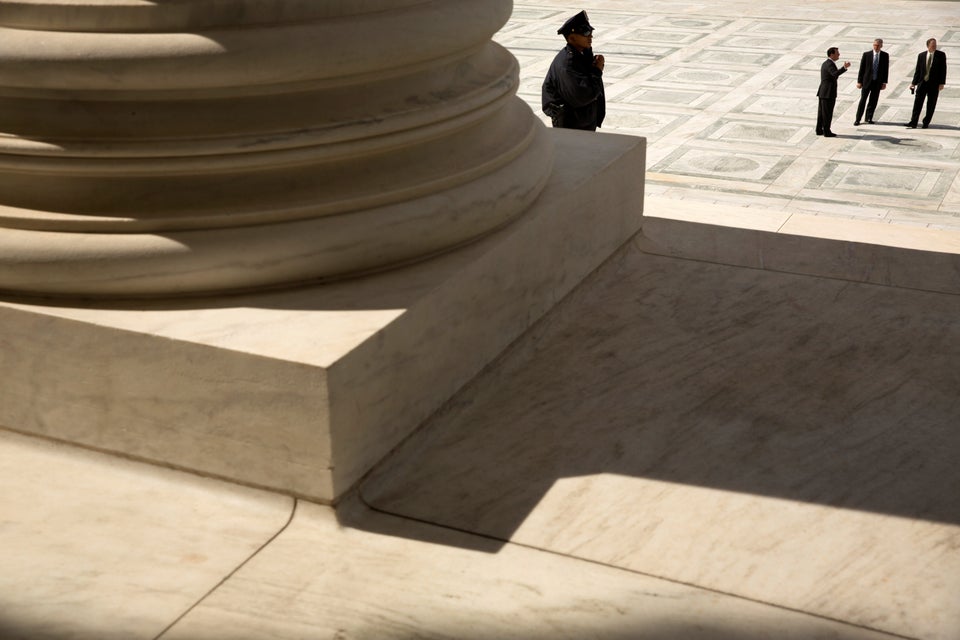
Overlooked in the first presidential debate, Supreme Court appointments may still be the prime legacy of the next president. Given Scalia’s open seat, recent tie votes, and the age and health of several current justices, whoever wins will appoint at least one, but probably two or three justices. As an index of how much a single justice matters, our national nonpartisan Campus Election Engagement Project has created a concise nonpartisan guide to the past 16 years of the Supreme Court, using Justice Antonin Scalia’s votes to demonstrate the very different kinds of Supreme Court Justices a new president might appoint. Scalia served 29 years after Ronald Reagan nominated him. Since his death, the Court has been split on most contested issues between four justices nominated by Democrats and four nominated by Republicans.
Given that the Republican Senate leadership has refused to consider President Obama’s nominee until after Election Day, the next president could immediately fill Scalia’s open position. At that point, Justice Ruth Bader Ginsburg will be 83 with a history of cancer, Justice Anthony Kennedy 80, and Justice Stephen Breyer 78. The new president will therefore likely nominate several justices, determining the Court’s direction for decades to come.
Abortion: Whole Women’s Health v. Hellerstedt (2016)
5-3: Texas passed a law that required an abortion doctor to have admitting privileges at a hospital within 30 miles and that abortion clinics comply with standards for surgical centers. This law would likely cause many abortion clinics in the state to close. Opponents charge that the law is unconstitutional because it places an “undue burden” on abortions. The Court struck down the Texas law. Scalia long opposed the idea that there is a constitutional right to an abortion and would have opposed Roe v. Wade, the decision that legalized it. His successor and other new Justices could determine if there is a right to an abortion and what restrictions can be placed on the procedure.
Campaign Finance: Citizens United (2010)
5-4: The Court ruled that limitations on independent political spending by unions and corporations are unconstitutional. This eventually led to the creation of “superPACs,” which can accept unlimited money from donors to support a candidate. Scalia provided the fifth vote, permitting unlimited independent campaign spending by unions and corporations. His successor could maintain or reverse this.
Climate Change: Massachusetts v. EPA (2007)
5-4: The Court ruled that the Clean Air Act (1970) permits the EPA to regulate greenhouse gases and that the EPA must regulate greenhouse gases if they pose a threat to human health, regardless of the cost of such regulations. Scalia ruled with the minority that Congress must pass a law giving EPA authority to regulate greenhouse gases. The next justices could preserve or reverse this ruling.
Affirmative Action: Fisher v. University of Texas (2016)
5-3: In an attempt to make the university’s racial make-up mirror Texas’s population, the University of Texas uses race as one of several factors in deciding which students to admit. Fisher argued that it is unconstitutional for a state to take race into account in college admissions. The Court upheld the University of Texas policy. Scalia supported striking down attempts by public universities to use race as a factor in admissions and his replacement and other new Justices could be the deciding votes in related cases.
Class Action Suits: Wal-Mart v. Dukes (2011)
5-4: The Court ruled that the 1.5 million women who sued Wal-Mart alleging that they faced gender discrimination could not sue as a class action group because they could not prove that they all faced the exact same type of discrimination. Scalia wrote the opinion for the majority. Lawsuits against big companies that cannot be made into a class action suit are often dropped because it is too expensive to individually litigate against a big company. The next justice will have a major say on the rights of corporations vs consumers and employees.
Climate Change: West Virginia v. EPA (2016)
Open case before the D.C. Court of Appeals: Under the Clean Air Act, the Obama Administration issued the Clean Power Plan that required states to reduce carbon emissions 32% below their 2005 levels by 2030. States have challenged this law as a violation of the Clean Air Act. Scalia had long held that the Clean Air Act does not permit the regulation of greenhouse gases. His successor will likely rule on many climate change-related cases.
Contraception: Burwell v. Hobby Lobby (2014)
5-4: The Court ruled that a for-profit company could deny employees healthcare coverage for contraceptives based on the religious beliefs of the company’s owners. Justice Scalia was the fifth vote and his successor will decide whether to preserve or reverse this ruling.
Gun Rights: District of Columbia v. Heller (2008)
5-4: The Court struck down Washington, D.C.’s law that banned the ownership of handguns. The Court ruled that the Second Amendment guarantees an individual the right to own a firearm, so it is unconstitutional for D.C. to have a have a blanket ban on individuals owning certain types of guns, including handguns. Scalia was the fifth vote for ruling the ban on handguns unconstitutional. His successor could preserve or reject the idea that the constitutional right for an individual to carry a handgun overrides state or local laws.
Immigration Reform: U.S. v. Texax (2016)
4-4: The Obama administration created a program that allows the undocumented parents of American citizens to get work permits and be exempt from deportation. Texas sued, alleging that it was illegal to do this without Congressional approval. The Court deadlocked, putting the Obama program in limbo until Scalia’s replacement is appointed. Scalia had criticized Obama’s granting protection from deportation for young undocumented immigrants, and was expected to vote against the administration.
LGBTQ Rights: Obergefell v.Hodges (2015)
5-4: The Court ruled that marriage is a fundamental right and thus states cannot prohibit same-sex couples from marrying. Scalia dissented, voting to allow states to prohibit same-sex couples from marrying.
Obamacare: National Federation of Independent Businesses v. Sebelius (2012)
5-4: The Court ruled that Obamacare’s tax on individuals who did not purchase insurance was constitutionally valid. The Court also ruled that states could opt out of expanding federally covered Medicaid to additional low-income citizens, without threat of losing government funding, leading many states to opt out. Scalia joined the majority decision allowing states to opt out of expanding Medicaid, but argued in the minority that it was unconstitutional to uphold the tax on those who did not buy insurance. Scalia’s successor could rule on other issues raised by the expansive law.
Presidential Elections: Bush v. Gore (2000)
5-4: Decision, which won’t be re-litigated, that halted the recount of Florida election ballots, installing George Bush as president by 537 votes. Scalia voted with the majority, arguing that because each county used different standards in their counting, the recount could not proceed.
Redistricting: Arizona v. Arizona Independent Redistricting Commission (2015)
5-4: The Court held that it is constitutional for voters of a state to vote to create a bi-partisan commission to draw congressional districts in an effort to combat partisan redistricting. Scalia voted with the minority. Many other states have passed or proposed similar laws, so the next justice will have a major say if these type of efforts are permitted.
Unions: Freidrichs v. California Tachers Association (2016)
4-4: The Court split evenly after Scalia’s death, leaving intact an Appeals Court ruling that upheld current law, where, unless a state prohibits it, workers represented by a union are required to pay fees for this representation even if they do not support the union, while being able to opt out of union political spending. Scalia was expected to side against the unions. His replacement will be the deciding vote.
Voter ID Laws: Crawford v. Marion County (2008)
6-3: The Court held that state laws that required voters to present photo identification at the polls are constitutional. Scalia voted with the majority to permit voter ID laws, which have been found by lower courts to make it harder for the elderly and minorities to vote. The next justices could determine which restrictions are constitutional.
Voting Rights Act: Shelby County v. Holder (2013)
5-4: Section 4 of the Voting Rights Act required states with a history of racial discrimination to obtain permission from the federal government to change their voting laws. The Court ruled that this rule was unconstitutional because the formula for deciding which states it applied to had not been updated since the 1960’s. Scalia voted with the majority. The VRA will likely face challenges to its other sections, and Scalia’s successor could have big impact on the future of voting rights.
(Created by the national nonpartisan Campus Election Engagement Project.Visit our Nonpartisan Candidate Guides page to find our Presidential guide and key senate and gubernatorial guides, including printable PDFs, and a Spanish language version of this and our Presidential guide.)

